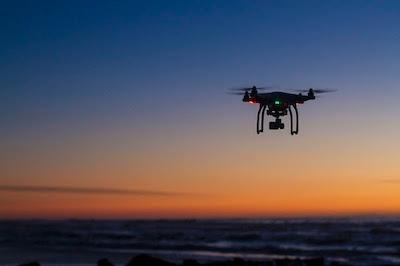Tue, May 21, 2019
Drones May Not Be Flown Closer Than 3,000 Feet Laterally Or 1,000 Feet Above Any Navy Ship
At the request of its federal security partners, the Federal Aviation Administration (FAA) is using its existing authority under Title 14 of the Code of Federal Regulations (14 CFR) § 99.7 – “Special Security Instructions” – to restrict drone operations over select facilities and assets.

The FAA has established special security instructions that restrict drone operations in airspace up to 2,000 feet mean sea level (MSL) near U.S. territorial and navigable waters. These new restrictions specifically prohibit drone flights in this airspace within a stand-off distance of 3,000 feet laterally and 1,000 feet above any U.S. Navy vessel.
UAS operators who violate the flight restrictions may be subject to enforcement action, including potential civil penalties and criminal charges. Violators may also face security enforcement action that results in the interference, disruption, seizure, damaging or destruction of unmanned aircraft considered to pose a safety or security threat to protected U.S. Navy assets.
The restrictions are detailed in Notice to Airmen (NOTAM), and can be found at the UAS Data Display System (UDDS) website. Unmanned Aircraft System (UAS) operators are urged to familiarize themselves with these NOTAMs and to go to UDDS to help them comply with these FAA restrictions, which are put in place to support the nation’s security. UDDS provides precise descriptions of the airspace to which these restrictions are applied, procedures to access this airspace, an interactive map, downloadable geospatial data and other crucial information and tools for UAS operators. A link to these restrictions is also included in the FAA’s B4UFLY mobile app.
The FAA is considering additional requests by eligible federal security agencies for UAS-specific airspace restrictions using the agency’s § 99.7 authority as they are received. Additional changes to these restrictions will be announced by the FAA as appropriate.
UAS operators can find more information on a broader range of issues related to flying drones in the National Airspace System on the FAA’s main UAS website, including answers to frequently asked questions.
(Source: FAA news release. Image from file)
More News
From 2021: The Inside Skinny On What Being An ANN Oshkosh Stringer Is All About By ANN Senior Stringer Extraordinare, Gene Yarbrough The annual gathering at Oshkosh is a right of p>[...]
Video Showed That During The Takeoff, The Nose Baggage Door Was Open On May 10, 2025, about 0935 eastern daylight time, a Piper PA-32RT-300, N30689, was destroyed when it was invol>[...]
Get The Latest in Aviation News NOW on Instagram Are you on Instagram yet? It's been around for a few years, quietly picking up traction mostly thanks to everybody's new obsession >[...]
"I think what is key, we have offered a bonus to air traffic controllers who are eligible to retire. We are going to pay them a 20% bonus on their salary to stay longer. Don't reti>[...]
Aero Linx: Pilot Briefing The gathering, translation, interpretation, and summarization of weather and aeronautical information into a form usable by the pilot or flight supervisor>[...]
 Oshkosh Memories: An Aero-News Stringer Perspective
Oshkosh Memories: An Aero-News Stringer Perspective NTSB Prelim: Piper PA32RT
NTSB Prelim: Piper PA32RT ANN FAQ: Follow Us On Instagram!
ANN FAQ: Follow Us On Instagram! Aero-News: Quote of the Day (05.28.25)
Aero-News: Quote of the Day (05.28.25) ANN's Daily Aero-Term (05.28.25): Pilot Briefing
ANN's Daily Aero-Term (05.28.25): Pilot Briefing



